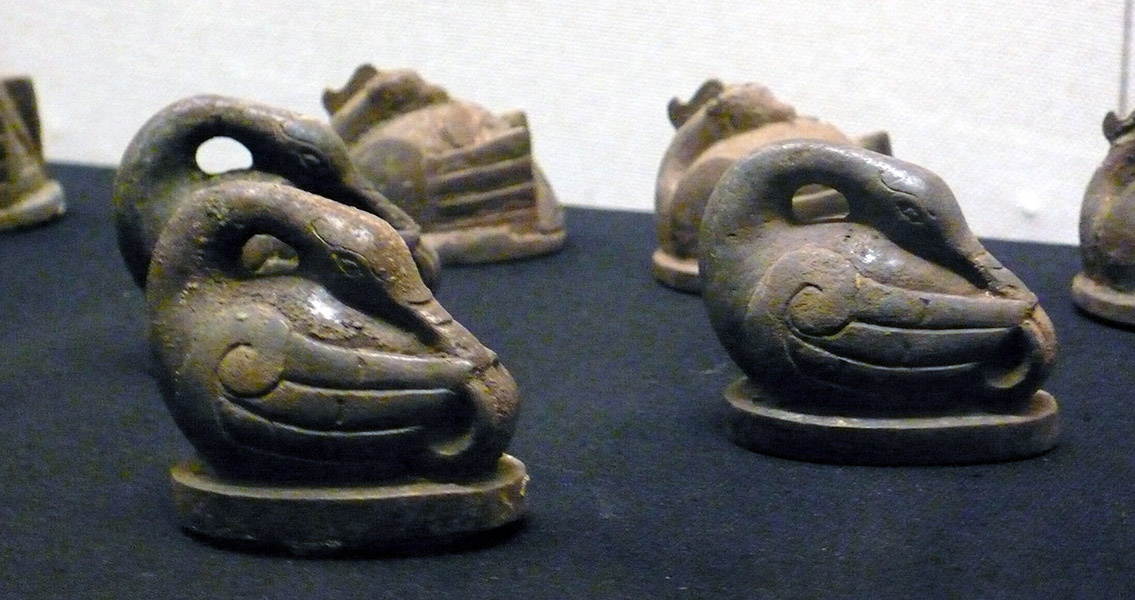<![CDATA[The most well-preserved tomb found in China is from the Western Han Period (206 BC-24 AD), and belonged to the Marquis of Haihun – Haihunhou, Liu He. His burial site is in the Jiangxi Province in eastern China, and while his tomb was amazingly preserved his actual remains were not, leaving only small pieces of pelvis, leg bone and teeth. Now, according to a statement by Li Cunxin, from the Chinese Academy of Social Sciences (CASS), in China.org, archaeologists from the Beijing-based Institute of Archaeology are working with CASS to conduct DNA analysis on these remains, specifically the teeth, which were discovered in an interior coffin in 2015. The embalming techniques used to preserve bodies prior to burial during the Han Dynasty have been described as very sophisticated -- especially for the bodies and burials of nobility. For example, a woman’s tomb which was found in the 1970s, at a hill close to Changsha (the Hunan Province capital) called Mawangdui. Although the occupant was buried around 2,100 years ago, her body is one of the most well-preserved sets of remains known to history. Archaeologists worked under the assumption that the Marquis’ body would have been preserved using similar embalming techniques. Natural disasters like earthquakes, however, had caused damage to the chamber where his tomb was located. His wooden coffin, which measured a meter and a half in length, had been flattened into a plank shape, and water from the nearby Poyang Lake (the largest freshwater lake in China) had leached into the soil underneath the chamber, leaving his remains mixed with wood and mud. Archaeologists have since relocated his interior coffin in order to perform a thorough analysis and cleaning in a lab setting. A private seal, woven mats, a belt, jade, plus additional glazed colored decorations thought to be from a wooden sleeper have also been found. The graveyard of the Marquis covers a 46,000 square meter area. Along with the two primary tombs used by the marquis and his wife, were seven additional tombs which are believed to be occupied by either his children or his concubines. Archaeologists have also discovered a sword from one of the additional tombs that may have belonged to one of Liu He’s sons. Both this coffin and another (designated as tombs five and four respectively) have also been raised and relocated to a lab for further research. Xu Changqing, with the Jiangxi Provincial Institute of Relics and Archaeology, told China.org that if any remains were discovered inside these two coffins, they would also be sent to the Institute of Archaeology for DNA testing to determine their relation to the Marquis. He added that the DNA tests will be helpful not only in determining the diet, habits and overall condition of health of these ancient people, but to also shed light over the past 2,000 years of human evolution. The Marquis's tomb is one of the few tombs excavated not to have suffered looting, and more than 10,000 artifacts have been discovered there to date. Emperor Wu, the grandfather of Liu He, is credited for reigning over one of the most prosperous time periods in the history of China. Liu was awarded the title of Marquis Haihun - Haihunhou, when he was unseated after serving only 27 days as emperor. Haihun was the ancient name of Liu’s homeland in north Jiangxi. ]]>
What Little DNA Remains of the Marquis of Haihun to Be Analyzed
